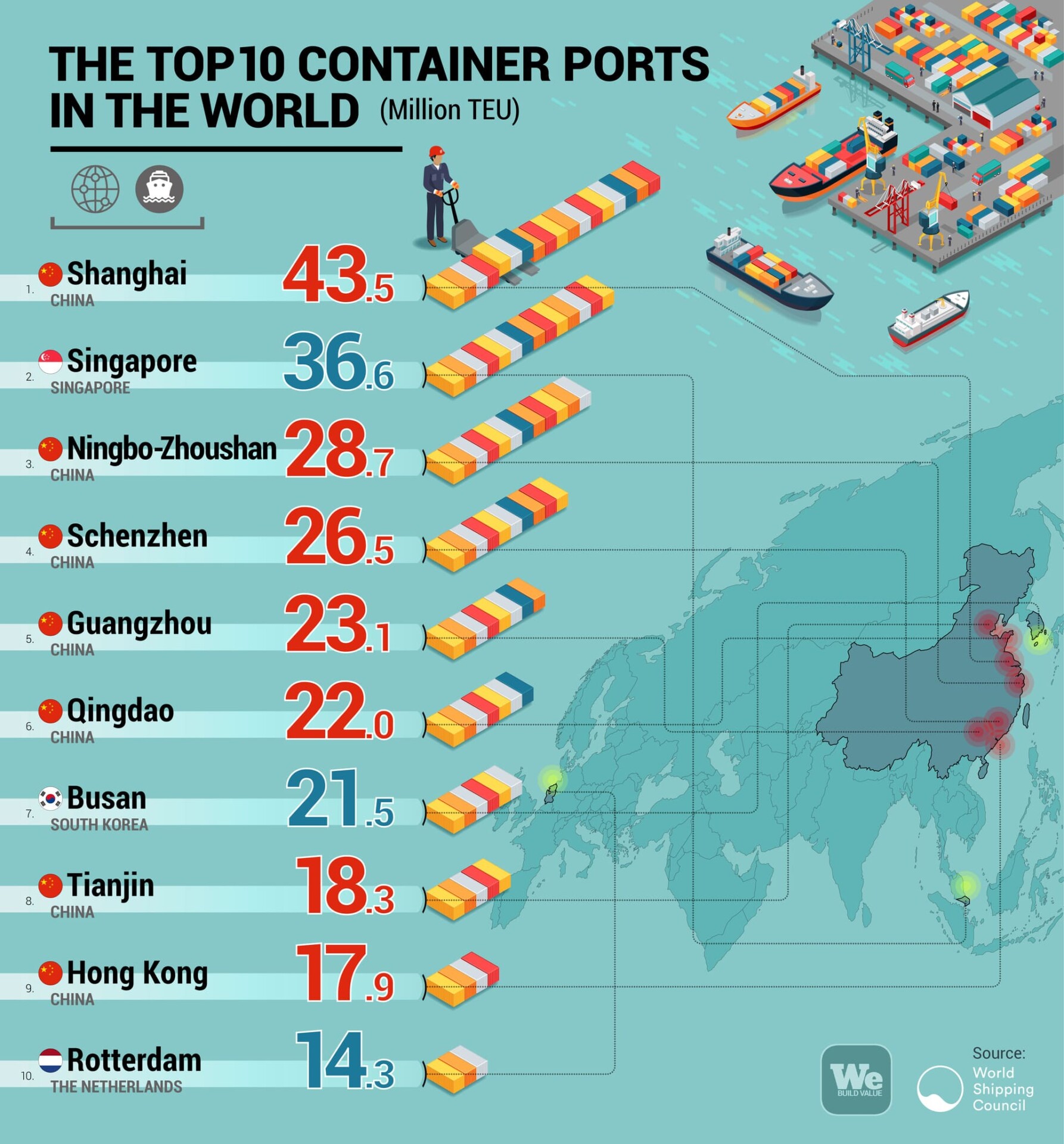The United States is the main client of the Panama Canal and in particular of the new locks constructed by Webuild in June 2016, which allowed Panama to double its share of world maritime commerce from 3% to 6%. In 2022, according to the canal’s administration, more than 510 million tons of goods took the waterway shortcut that allows ships to cross from the Atlantic to the Pacific in just ten hours.
American ports generate 73% of the traffic through the Panama isthmus as a point of origin, destination or sorting. China, Japan and Cile are next, with 21%, 13% and 10% respectively. In less than seven years the new canal has shuffled the cards for American ports, boosting those that can handle New-Panamax ships, which have a triple cargo capacity, equal to 15,000 containers, are 400 meters long and, most of all, have a much deeper draft than those that previously crossed the canal.
Several US ports had to be overhauled, digging and dredging their basins to reach the minimum depth of 50 feet, or 15.2 meters. Large-scale infrastructure work was carried out in the largest East coast harbors of New York-New Jersey, Norfolk, Baltimore, Savannah and Miami. On the West coast, for the largest port complex in the country at Los Angeles-Long Beach, the main impediment was not the basin’s depth but rather that the entrance to the harbor was limited by the Gerald Desmond Bridge, which was not too old, at barely 52, but was definitely too low over the sea level.
The administration of the Californian port called on Webuild to replace the old bridge with a new cable-stayed bridge, with a 330 meters long central span crossing over the Back Channel, the entrance to the port complex, at a height of 62 meters. The $1.5 billion project was completed in October 2020. In two years, the Long Beach International Gateway Bridge has collected numerous accolades for contributing to the American economy as a vital link in the supply chain. The new bridge dominates the vast port area of Los Angeles and Long Beach, which manage 37% of all the goods that enter the US by sea. The Long Beach port alone manages goods worth more than $200 billion a year, supplies 2.6 million jobs and boasts 10 piers for New-Panamax ships and 66 cranes.
With its two support towers reaching 515 feet, or 160 meters, into the sky and a multi-color LED lighting system, the six lane bridge is today a California infrastructure icon. The US government has inserted it in the Federal Strategic Highway Network, a list of key infrastructures that are a priority for the country’s development.
Great changes in global maritime trade
COVID-19, the war in Ukraine, climate change and geopolitics have imposed drastic alterations to maritime transport and logistics, clogging some ports and shutting others, altering routes, prolonging delays and boosting shipping costs. Ships, which carry over 80% of world trade, are being asked to augment capacity, beyond 10,000 or 15,000 containers to as much as 20,000 containers, and so their size grows every year.
In 2022 China had over 1,200 large commercial ships under construction, far more than the US. China owns more than 7,300 commercial ships, four times more than the US. Hence the need for harbors, navigation companies and transport operators to renew their infrastructure to respond to the increase in demand for goods shipped in containers.
According to the “Review of Maritime Trasport 2022” by the United Nations Conference of Trade and Development (UNCTAD), maritime commerce picked up again in 2021, while shipping of goods grew by 3.2% to 11 billion tons. That is a 7% improvement considering the 3.8% decline of 2020. The growth was registered in all developing regions. Africa grew by 5.6%, Latina America by 3%, Asia by 3%. Asia remained the main global shipping center, accounting for 42% of all goods loaded and 64% of all goods unloaded in 2021.

Genoa’s bid to become a new maritime exchange hub
Europe is also approaching this evolution in maritime commerce with new projects and solutions. In Italy, the port of Genoa assigned to Webuild the construction of a new breakwater pier. The structure, of national strategic importance, will facilitate the maneuvers of great ships and improve safety by separating commercial shipping from cruise and passenger ships. The dam, unique in the world for its size and engineering complexity, will be built entirely in open water, without interrupting the port’s operations. It will rest on the sea bottom at variable depths of up to 50 meters and will be 6. 2 kms long. Its construction will allow the harbor to welcome the largest of container ships, the ones as long as 400 meters, that is twice as long as the ones it can accomodate now, making Genoa and the Mediterranean, once again, a global maritime trade hub.

